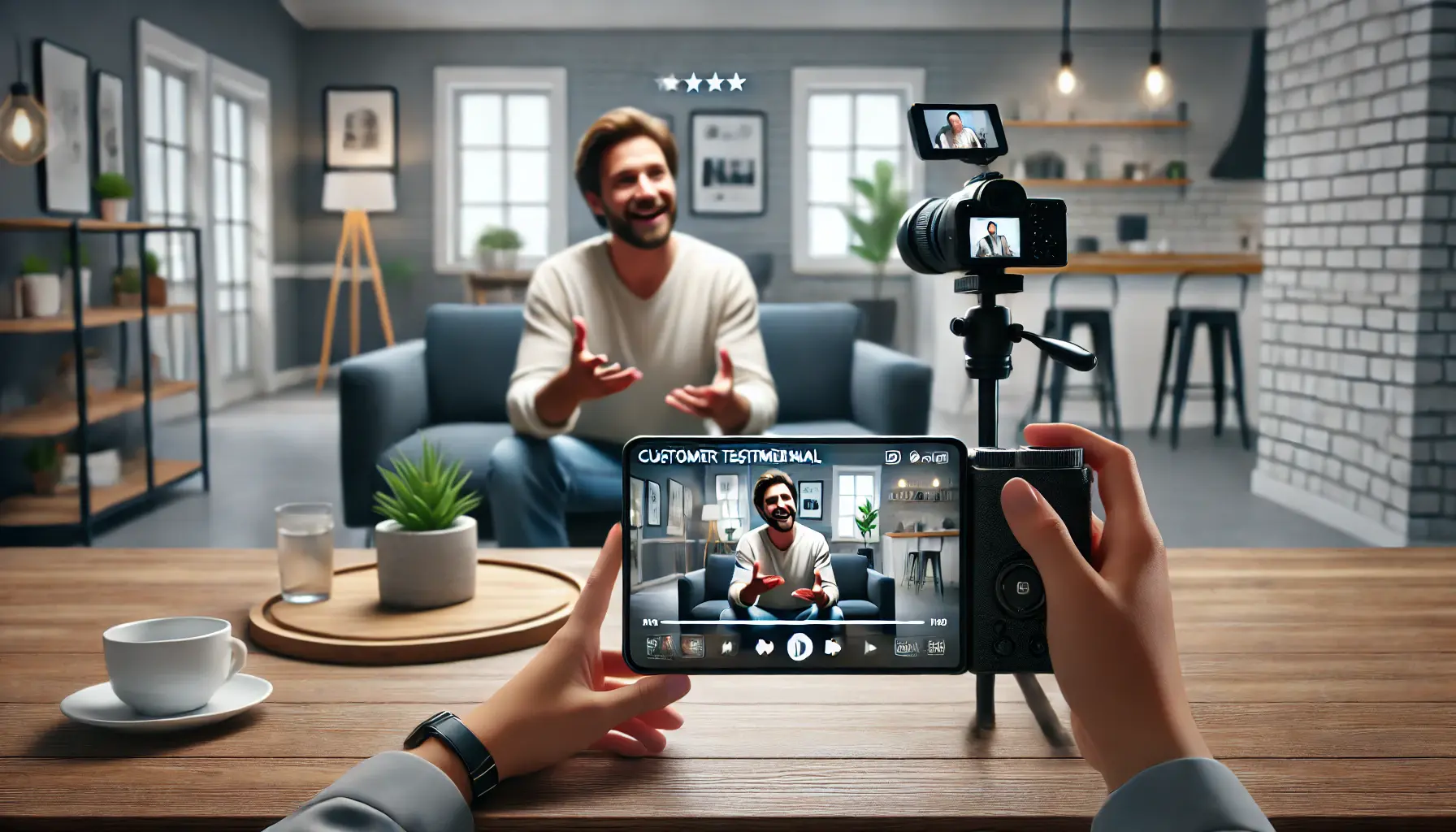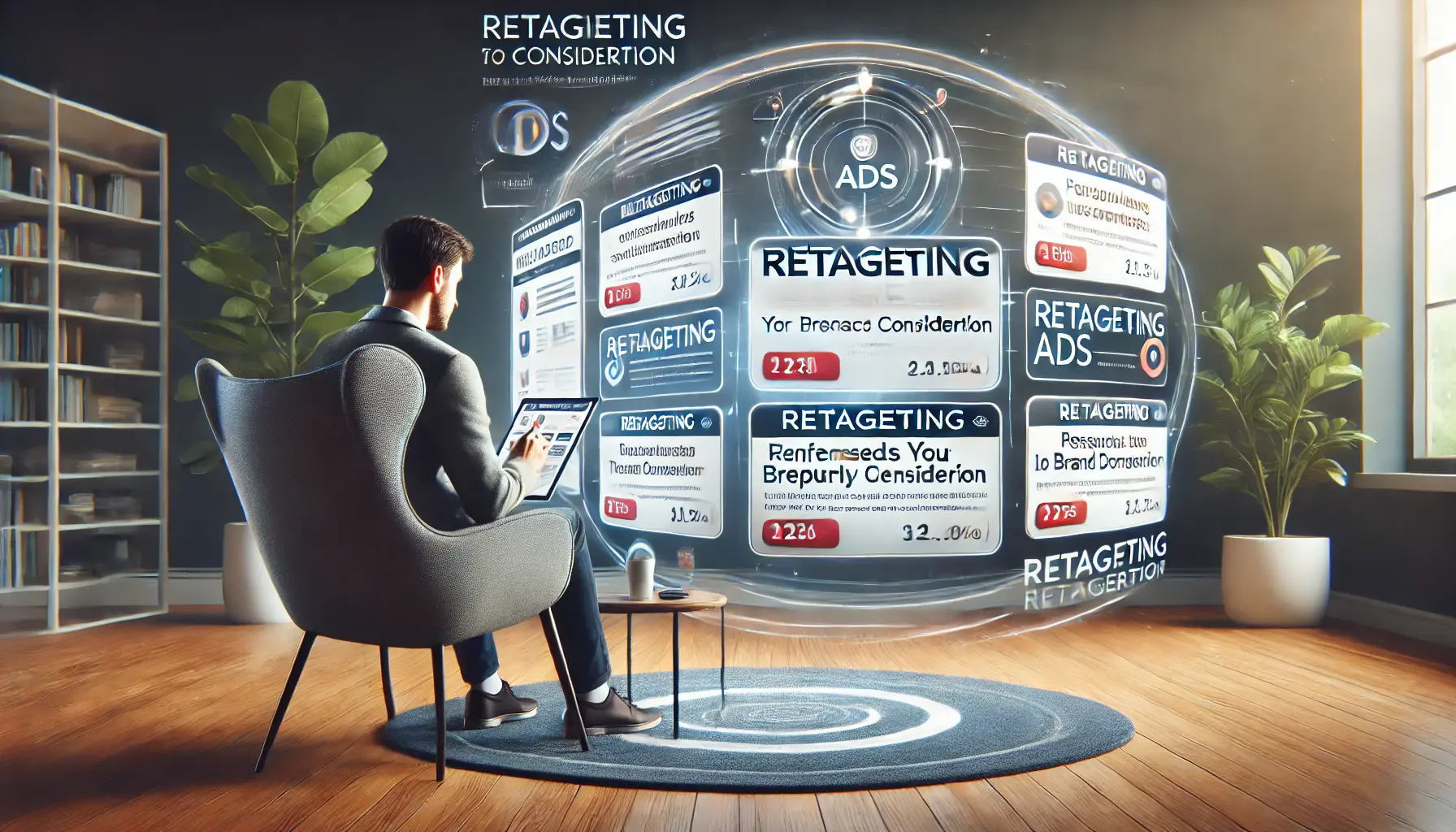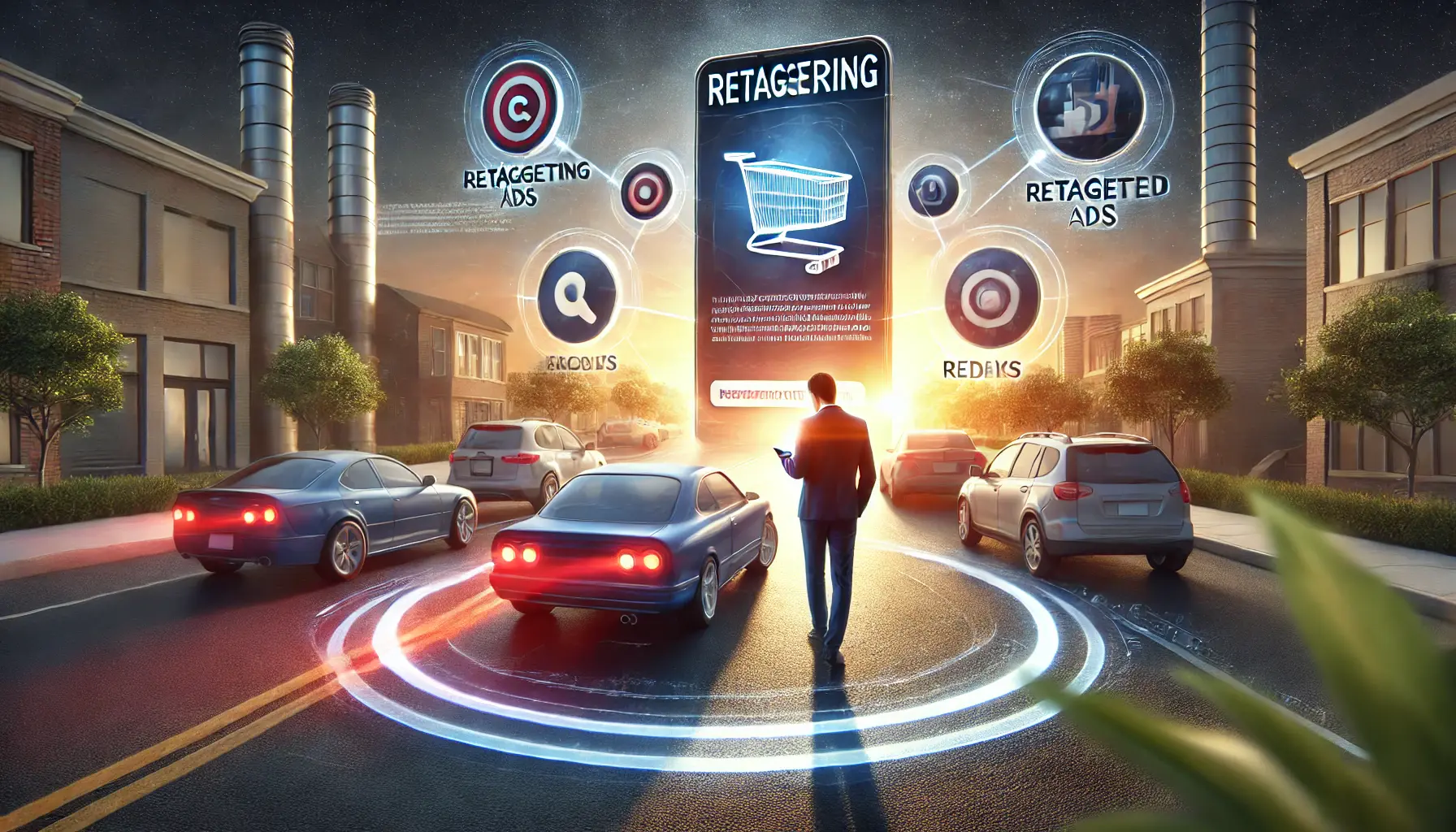Brand consideration is one of the major factors that now influence the choices of consumers in today’s highly competitive digital landscape.
Admittedly, there are many different products and services to choose from online; building brand awareness alone is no longer enough to make consumers remember your brand.
What matters is how your brand stays in the minds of consumers when they are ready to make purchasing decisions.
To make an impact, it’s essential to use creative and targeted advertisements that drive brand considerationThe likelihood that consumers will choose a particular brand when making a purchase decision..
In this article, we will explore five creative ad techniques to help your brand stand above the competition and be chosen by consumers.
Once you start using creative advertising strategies, you can reach your audience in ways that surpass traditional advertising methods.
Moreover, these techniques can foster a deeper emotional connection to your brand.
Let’s dive into each of these techniques and discuss how they can drive brand consideration and contribute to your business growth.
- Understanding Brand Consideration in Advertising
- The Power of Visual Storytelling in Brand Consideration
- Amplify Brand Appeal by Leveraging User-Generated Content
- Interactive Advertising Drives Engagement and Consideration
- Retargeting Strategies to Enhance Brand Consideration
- Conclusion: Ways to Drive Brand Consideration in the Digital Space
- Q&A: Driving Brand Consideration
Understanding Brand Consideration in Advertising
Brand consideration represents the likelihood that consumers will choose your brand when they are ready to purchase within your category.
This stage goes beyond awareness; it’s the point where consumers start evaluating your brand in relation to competitors based on value, reputation, and relevance.
In today’s advertising landscape, brand consideration is about creating long-term loyalty and encouraging repeat purchases in an environment filled with abundant choices.

Brand consideration in the consumer journey, visualizing the process of evaluating different brand options.
What is Brand Consideration?
Brand consideration is the stage of the consumer journeyThe stages a consumer goes through before, during, and after purchasing a product or service. where a person views your brand as a viable alternative to others.
At this stage, they are not only aware of your brand but have developed a favorable impression of it.
This step is crucial because it indicates that the consumer is seriously considering your product or service and could soon convert to a paying customer.
Without strong brand consideration, your marketing efforts may lead only to fleeting awareness rather than sustained interest and sales.

The role of brand consideration in digital advertising, highlighting consumer engagement across multiple devices.
Importance of Brand Consideration in Digital Advertising
In digital advertising, brand consideration plays a pivotal role in bridging the gap between awareness and purchase.
While ads can generate initial interest, they must go further to influence the consumer’s decision-making process.
Consideration ads remind, persuade, and entertain potential customers, reinforcing your brand’s value and building trust.
By driving brand consideration, passive observers can become active shoppers who confidently choose your brand over the competition.
Advertising for brand consideration differs from straightforward promotion.
It involves creating messages and visuals that appeal to consumers’ preferences, values, and needs, fostering a connection deeper than product features alone.
This approach has made digital advertising more effective, especially in today’s saturated market, where consumers have numerous options at their fingertips.

The influence of brand consideration on consumer decision-making, visualized through comparison of product choices.
How Brand Consideration Impacts Consumer Decisions
Brand consideration is crucial as it often represents the dividing line between interest and purchase.
Successful brand consideration means that when consumers think about a specific category, they are inclined to think of your brand.
Your ads should leave a lasting, positive impression—one that speaks to the brand identity and values that set it apart from competitors.
Brands that excel in driving consideration often use a mix of storytelling, targeted messaging, and tailored visuals to establish themselves as top-of-mind choices.
By highlighting your brand’s unique selling points and addressing consumer pain points, you position your brand as the best solution within the category, ultimately influencing the consumer’s final choice.

Abstract visualization of key metrics used to measure brand consideration in digital marketing.
Key Metrics to Measure Brand Consideration
To gauge the effectiveness of your brand consideration efforts, tracking the right metrics is essential.
Some key indicators include:
- Brand Lift: Measures the increase in consumer interest and preference after exposure to an ad campaign.
- Click-Through Rate (CTR): Shows how often people engage with your ads, indicating their interest in learning more about your brand.
- Conversion Rate: Although often used to measure purchases, it can also reflect the transition from consideration to decision stages.
- Customer Sentiment and Feedback: Reviews and feedback reveal how customers perceive your brand over time.
By analyzing these metrics, you can better understand how well your ads resonate with your audience and whether they are effectively driving brand consideration.
A strategic approach to tracking and improving these indicators will lead to higher engagement, stronger brand loyalty, and, ultimately, increased sales.
Brand consideration is key to making your brand memorable and fostering long-term loyalty among consumers.

The emotional power of visual storytelling in influencing brand consideration.
The Power of Visual Storytelling in Brand Consideration
Visual storytelling has emerged as an important medium to drive brand consideration across digital advertising.
With every ad competing for attention, the chances of standing out among the clutter have decreased.
Using appealing visuals and narrative techniques, brands can connect emotionally with their audience, leaving a lasting impact.
More than simply showcasing products, visual storytellingA communication strategy that uses images, videos, and other visuals to convey a brand message. translates complex messages into compelling visuals, creating an indelible mark in consumers’ minds.
This approach goes beyond mere promotion, building a storyline that resonates with and engages target consumers, helping them make decisions when choosing brands for purchase.

The role of high-quality imagery in capturing consumer attention in digital marketing.
Using High-Quality Imagery to Capture Attention
A powerful visual can communicate your brand’s message instantly, often eliciting an immediate emotional response.
This can be achieved through lifestyle photos, product shots, or abstract images, all involving the use of high-quality imagery to evoke emotions and portray a brand’s values.
High-quality visuals encourage potential customers to take a closer look at what you offer.
Investing in professional photography or graphic design can enhance your brand’s credibility, distinguishing it from competitors who rely on generic or low-resolution visuals.

The power of storytelling in digital marketing, creating a connection with the audience.
Creating a Narrative that Resonates with Audiences
Building a narrative that resonates with audiences leaves a lasting, memorable message.
By showcasing relatable stories or addressing everyday challenges, brands can position themselves as relevant and trustworthy.
For example, an outdoor gear brand might use visuals of adventurers exploring the wild, subtly highlighting their products while telling a story of discovery and freedom.
This association with positive experiences boosts brand consideration.
When crafting a story, it’s crucial to consider the values and desires of your target audience.
Stories that resonate with consumer identities help create an emotional connection, giving audiences a sense of being seen and understood.
This alignment can be a key step in moving consumers from mere awareness to active brand consideration.

The impact of video ads in enhancing consumer engagement through dynamic and captivating content.
Leveraging Video Ads for Enhanced Engagement
Video ads are highly effective for building brand consideration, as they combine visuals, sound, and storytelling to convey complex information in a short amount of time.
Videos allow brands to showcase their products in action, tell compelling stories, and create memorable experiences.
Studies show that video content is often more memorable, making it a valuable asset for brand recall and consideration.
To maximize the impact of video ads, keep them concise, ensuring the message is clear and engaging within the first few seconds.
Optimizing videos for mobile viewing is essential as most consumers view video ads on mobile devices.

Using authentic visuals to foster trust with customers through real-life moments.
Building Trust Through Authentic Visuals
Authentic visuals are increasingly important in advertising as consumers seek brands that reflect real-life experiences and values.
Using real customer images, behind-the-scenes content, or user-generated photos can build trust and foster a sense of transparency.
Authentic visuals show genuine interactions with the product or brand, making it easier for consumers to consider the brand as a credible option.
For example, beauty brands often use unedited images of diverse customers using their products, helping consumers feel represented and valued.
This approach appeals to today’s audiences, who are more skeptical of overly polished, contrived advertisements.
Incorporating visual storytelling into brand consideration strategies enables brands to create emotional connections with their audiences, making them more memorable and trustworthy.
When done effectively, these strategies make a compelling case for why consumers should choose one brand over another.
Visual storytelling captures consumer attention by creating an emotional connection with your audience.

The impact of user-generated content in building brand trust and appeal.
Amplify Brand Appeal by Leveraging User-Generated Content
User-generated content (UGC) is one of the most potent ways to drive brand consideration, showcasing the real experiences of real customers.
When consumers see genuine feedback, photos, and videos from other users, they perceive the brand as credible and trustworthy.
UGC provides an element of authenticity that traditional advertising often cannot, making it an excellent tool for boosting brand appeal and influencing purchase decisions.

The role of customer testimonials in building trust and enhancing ad campaigns.
Incorporating Customer Testimonials into Ads
Customer testimonials rank among the most effective forms of UGC, providing firsthand knowledge from satisfied users.
Testimonials can be featured in ad campaigns, on social media, and even on product pages.
By highlighting positive experiences, testimonials help prospective customers understand the real value of the product, increasing brand consideration.
- Written Testimonials: Use ad copies featuring written feedback from customers to build credibility.
- Video Testimonials: Create short video snippets featuring customers sharing their experiences to deliver an engaging and authentic message.

The power of real customer experiences in building brand credibility.
Showcasing Real Experiences to Build Credibility
Showing real customer experiences in ads is a powerful way to build credibility.
This can include photos, videos, or stories that reflect actual user experiences, allowing consumers to visualize themselves using the product.
This strategy is particularly effective for lifestyle, fashion, travel, and wellness brands, where aspirational content resonates well with audiences.
Consider encouraging UGC creation on social media by asking customers to tag or mention the brand.
These real-life snapshots provide candid insights into how the product is used and enjoyed, strengthening brand appeal.

The power of audience participation through social media hashtags in building brand engagement.
Encouraging Audience Participation with Hashtags
Using branded hashtags is an effective way to encourage audience participation and gather UGC.
By creating a memorable hashtag, brands can invite customers to share their own photos, videos, and stories.
This not only generates a wealth of content but also builds a community around the brand, enhancing brand consideration and trust when potential customers see others endorsing the product.
- Create a Catchy Hashtag: Develop a memorable hashtag that customers will enjoy using when posting about your product.
- Feature User Content: Repost user-generated content from the hashtag on your social media channels to show appreciation and encourage further participation.

The power of user-generated content in expanding brand reach and visibility.
Maximizing Ad Reach with User-Generated Content
Brands can increase the reach of UGC by embedding it directly into their ad campaigns.
UGC can be used in various formats, such as carousel ads on social media, display ads, and video ads.
Featuring real customer content in ads conveys brand credibility and fosters a sense of authenticity, encouraging others to consider the brand when making purchasing decisions.
UGC ads are particularly effective on platforms like Instagram, where visuals are key to capturing attention.
By integrating UGC into these ads, brands create a genuine connection with viewers, demonstrating how real people benefit from their products.
This approach is often more relatable and impactful than traditional ads.
Overall, leveraging user-generated content provides a powerful way to amplify brand consideration.
Through realistic and relatable experiences, consumers are more likely to trust the brand and move toward consideration for purchase.
By integrating UGC into advertising strategies, brands can establish stronger connections with their audience and increase the likelihood of conversion.
User-generated content adds authenticity to your brand, encouraging potential buyers to trust and consider it.

The impact of interactive advertising on driving consumer engagement and brand consideration.
Interactive Advertising Drives Engagement and Consideration
Interactive advertising gives audiences a reason to engage, creating a need to participate and fostering memorable experiences.
By interacting with users, interactive ads build brand recall far more effectively than static or passive ads, leaving a positive impression of the brand.
Through quizzes, games, surveys, and other interactive elements, brands can curate personalized experiences that capture audience attention and drive brand consideration.

The role of gamified ads in engaging and incentivizing users through interactive content.
Gamified Ads to Engage and Incentivize
By integrating interactivity through rewards, points, or levels, brands incentivize users to spend time engaging with the ad, increasing both engagement and brand consideration.
For example, a skincare brand might use a gamified quiz where users answer questions about their skin type and receive personalized product recommendations.
This not only entertains users but also provides useful information, making them more likely to consider the brand when making a purchase decision.

Using polls and surveys to actively engage with the audience and gather valuable feedback.
Polls and Surveys to Engage with the Audience
Polls and surveys are simple yet effective interactive ad formats that allow brands to gain insights and interact with their audience.
These formats work well on social media platforms where users can answer questions or rate preferences quickly.
Polls and surveys encourage viewers to think about the brand and its offerings, helping them see how it aligns with their needs.
By engaging them in this way, consumers are more likely to remember and consider the brand.
Here are some effective ways to gather feedback from customers and improve personalization:
- Polls: Take quick polls on Instagram Stories for instant feedback on a new product or idea.
- Short Surveys: Run short surveys within ad campaigns to learn about consumer preferences and create a personalized brand experience.

How dynamic ads create personalized experiences by adjusting content to user interests.
Creating Personalized Experiences Through Dynamic Ads
Dynamic ads create personalized experiences by using real-time data to display content tailored to individual user interests.
This approach increases ad relevance, making the brand appear more attentive to each consumer’s unique preferences.
Dynamic ads are especially effective for e-commerce, as they can show products based on browsing history, purchase intent, or even demographics.
For example, a clothing retailer might use dynamic adsAdvertisements that change content based on user behavior, demographics, or other real-time data. to show tailored outfit suggestions based on prior user interactions.
Such ads provide a personalized shopping experience, boosting brand consideration by demonstrating that the brand understands the consumer’s specific needs.

The role of interactive ad elements in improving brand recall and consumer engagement.
Enhancing Brand Recall with Interactive Ad Elements
Interactive elements like sliders, clickable buttons, and 360-degree product views enhance brand recall by making ads more memorable.
These features allow users to explore ad content actively rather than passively viewing it.
For instance, a car brand might use a 360-degree view to enable users to navigate through a new model, creating a deeper level of interaction and memory retention.
This interactive effect in advertising improves the chances of better brand recall and consideration.
Interactive ads provide a powerful approach for brands to drive engagement, create memorable experiences, and increase brand consideration.
By actively involving audiences and offering personalized content, brands can build deeper connections with consumers and establish themselves as top-of-mind choices in their respective categories.
Interactive ads actively engage audiences, making your brand more memorable and encouraging consideration.

The impact of retargeting strategies in reinforcing brand consideration through personalized ads.
Retargeting Strategies to Enhance Brand Consideration
Retargeting is a powerful digital marketing strategy focused on re-establishing interaction with users who have previously engaged with your brand but have not yet converted.
By delivering personalized ads to these individuals, you can keep your brand top-of-mind, enhancing brand consideration and increasing the likelihood of future conversions.

The concept of retargeting and its role in reinforcing brand awareness and engagement through personalized ads.
Understanding Retargeting and Its Importance
Retargeting involves tracking users who have visited your website or engaged with your content, then serving them targeted ads as they browse other sites or social media platforms.
This approach helps keep your brand visible to potential customers, reminding them of their initial interest and encouraging them to return and complete a desired action.
By focusing on these warm leads, retargetingA marketing technique that targets users who have previously interacted with the brand but have not converted. yields higher conversion rates than targeting a completely new audience.
Additionally, retargeting builds brand recall and trust, as repeated exposure reinforces your brand in the consumer’s mind.

Demonstrating effective retargeting techniques through personalized ads across various platforms.
Effective Retargeting Techniques
- Pixel-Based Retargeting: This method places a pixel on your website that tracks visitors and serves them ads on other platforms. It’s effective for reaching anonymous visitors and delivering ads based on their browsing behavior.
- List-Based Retargeting: This technique uses a list of existing contacts, like email subscribers, to serve targeted ads. It’s particularly useful for re-engaging past customers or leads with personalized messaging.
- Product Retargeting: This type of retargeting focuses on specific products or services that users viewed on your site, providing a personalized experience that can significantly boost conversions.

Analyzing best practices for retargeting campaigns through data analysis and performance metrics.
Best Practices for Retargeting Campaigns
- Segment Your Audience: Divide your audience based on actions such as pages visited and buttons clicked to deliver more targeted advertisements.
- Frequency Capping: Limit the number of times an individual sees your ad to prevent ad fatigue and maintain positive brand perception.
- Compelling Creative: Use engaging design elements and clear calls to action to capture attention and encourage clicks.
- Test and Optimize: Regularly monitor your retargeting campaigns and adjust strategies based on performance data to improve results.
By implementing these retargeting strategies, brands can effectively enhance brand consideration, boosting brand awareness and increasing the chances of conversion.
Retargeting re-engages interested users, reminding them of your brand and encouraging conversion.

Collaborating on digital strategies to drive brand consideration and increase consumer engagement.
Conclusion: Ways to Drive Brand Consideration in the Digital Space
Today, with growing competition in the digital space, creating brand consideration has become an essential differentiator for brands aiming to attract dedicated customers.
With multiple options at their fingertips, consumers have become more discerning.
For brands, the need of the hour is an innovative way to capture the attention of their target audience and remain memorable.
This article examined five powerful techniques to elevate brand consideration and secure a place in consumers’ minds.

Digital marketers collaborating on strategies and key takeaways to enhance brand consideration.
Key Takeaways for Driving Brand Consideration
Each technique discussed offers unique ways to foster stronger connections with your audience.
Here are the core strategies covered:
- Visual Storytelling: Engage consumers emotionally with high-quality visuals, authentic narratives, and compelling video ads that make a lasting impression.
- User-Generated Content: Enhance credibility by showcasing real-life experiences through customer testimonials, case studies, and encouraging users to create content using branded hashtags.
- Interactive Advertising: Utilize gamified ads, polls, and personalized experiences to actively engage audiences, making brand interactions memorable.
- Retargeting Strategies: Re-engage warm leads by serving targeted ads that keep your brand top-of-mind through techniques like pixel-based and list-based retargeting, boosting conversion potential.

Creating a long-term relationship with consumers through meaningful interactions and trust-building.
Building a Lasting Relationship with Your Consumer
For effective brand consideration, the strategy should create an emotional connection that resonates with your audience.
Trust, loyalty, and long-term interest are nurtured by brands through thoughtful visual storytelling, engagement with user-generated content, interactive experiences, and consistent retargeting efforts.
Personalization is crucial—the more you understand what matters to your audience and tailor your content accordingly, the stronger their consideration of your brand becomes, making them more likely to think of your brand when making a purchase decision.

A team of marketers discussing and planning a cohesive brand consideration strategy to ensure brand consistency.
Implementing a Cohesive Brand Consideration Strategy
Continually use data and feedback to refine your approach, as each technique contributes synergistically to building brand consideration.
Whether through dynamic ads or authenticity-focused visuals, each method adds significant value in establishing a brand identity that resonates with and stays top-of-mind among consumers.
Driving brand consideration is an ongoing effort of connecting, engaging, and reminding consumers why your brand is their best choice.
By integrating these methodologies, brands can gain an edge over competitors and foster long-term brand loyalty that supports sustainable growth.
Combining innovative ad techniques helps brands remain memorable and stand out in a competitive digital landscape.

Collaborative Q&A session focusing on strategies to drive brand consideration in a professional setting.
Your campaigns can be managed by an agency specialized in Google Ads, check out our service page.
Q&A: Driving Brand Consideration
Understanding how to effectively drive brand consideration is one of the most important strategies a business can employ to set itself apart from the competition.
Here are some frequently asked questions, along with succinct answers, designed to help you navigate this critical area of marketing.
Brand consideration is about the likelihood of consumers choosing your brand when making a purchase decision within your category.
Awareness alone is not enough; true consideration requires an active evaluation of your brand.
Brand consideration links awareness to purchase, fostering consumer choice and loyalty over time.
Ultimately, it translates into higher sales and greater market share.
Visual storytelling engages consumers emotionally, making your brand more memorable and relatable, which drives consideration and preference significantly.
User-generated content provides authenticity and trust through real customer experiences, which positively influences potential buyers to consider the brand.
Interactive advertising creates memorable experiences that boost engagement, making your brand more relevant and easier to recall during the decision-making process.
Utilize metrics like brand liftAn increase in consumer interest and preference after exposure to an ad campaign. studies, click-through rates, conversion rates, and customer feedback to assess the impact of your strategies on consumer consideration.
Breaking through market clutter, maintaining consistent messaging, and catering to a diverse audience with varying preferences are common challenges in driving brand consideration.
Personalization makes consumers feel valued, increasing the likelihood they will choose your brand over competitors as it aligns closely with their preferences.












